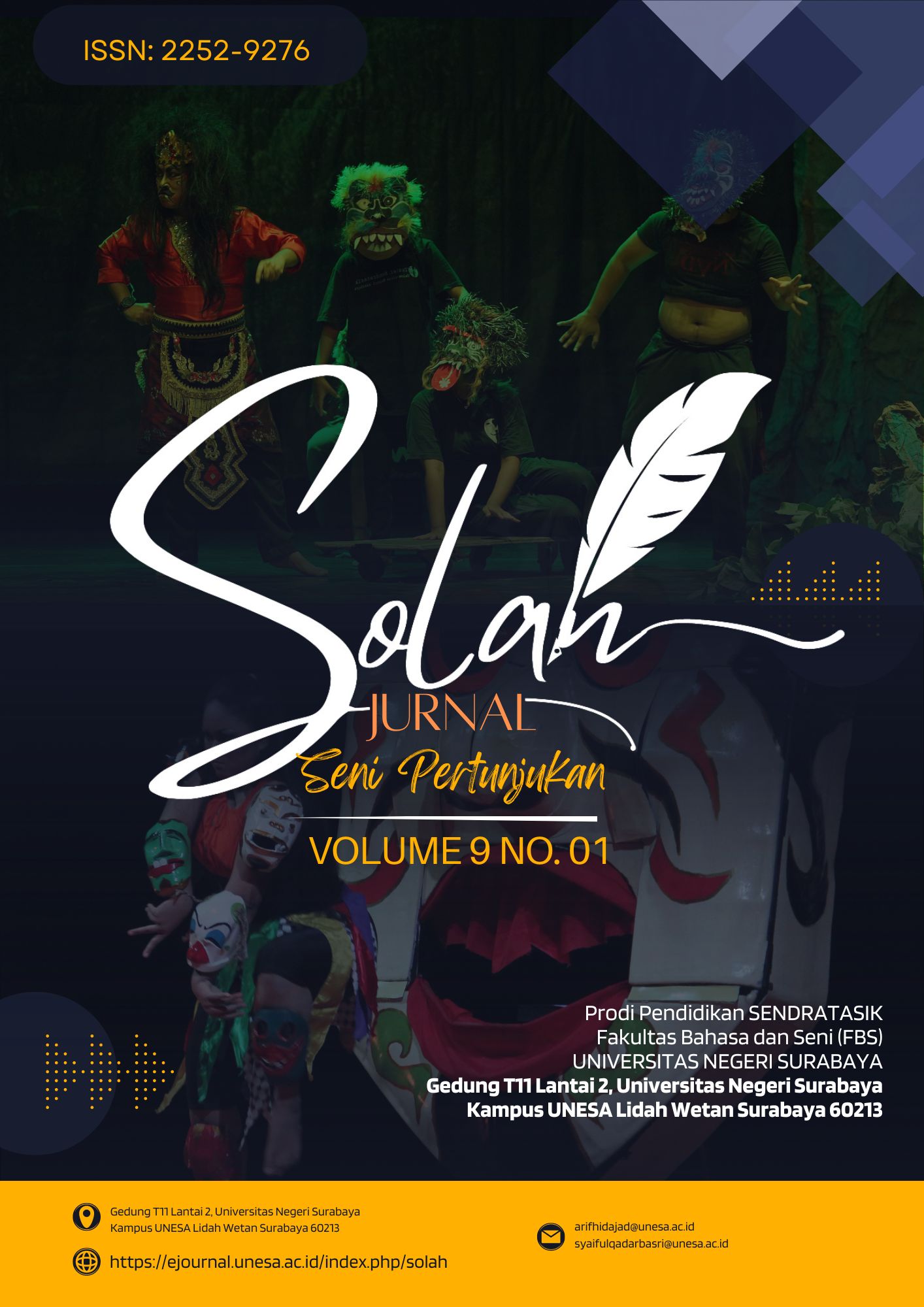VISUALIZATION OF TEMPERAMENTAL CHARACTERS IN DRAMATIC FORMS IN THE DANCE WORK BAD TUDE
DANCE OF BAD TUDE
Keywords:
Bad Tude, Tari Dramatik, dan TemperamentalAbstract
The dance work "Bad Tude" is a dance work that describes temperamental character and emotional management. This dance work departs from the choreographer's empirical experience of the temperamental character he has experienced. This character has a bad impact on oneself and the environment because it is difficult to control emotions, causing aggression that can threaten the lives of others. The choreographer's sense of remorse for temperamental behavior makes the choreographer aware to avoid this behavior by managing emotions. This work has two focuses, namely the content focus on temperamental character and emotional management. the focus of this form of work uses a form of dramatic dance. This dance work uses the method from Alma Hawkins as a rule for carrying out the work process. The method consists of exploration, improvisation, and formation. This dance work is presented on the proscenium stage using a representative symbolic mode of presentation. The style and variety of movements used are the result of an exploration of aggression in temperamental people such as shouting, slapping, kicking which are developed so that they become the identity of the work.
Downloads
Downloads
Published
How to Cite
Issue
Section
 Abstract views: 90
,
Abstract views: 90
, PDF Downloads: 228
PDF Downloads: 228



